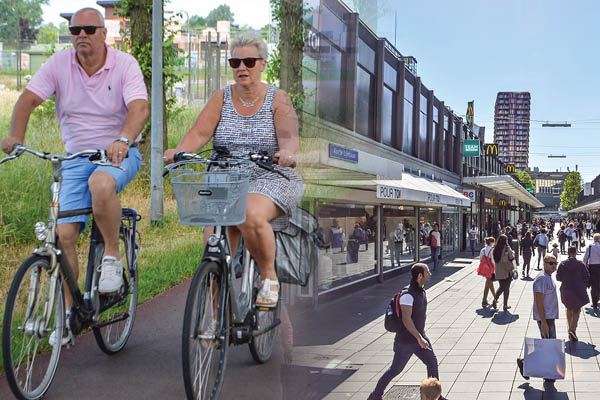Cycling / Cycling infrastructure / Walking
Bringing Dutch Context to London: Angela van der Kloof and Shelley Bontje present at the London Walking and Cycling Conference

On Friday, May 24th, 2019, experts, academics and campaigners will gather for the London Walking and Cycling Conference, in association with Steer, formerly the Hackney Cycling Conference. With the City of London having the highest walking rates of any local authority and Hackney being London’s number one borough for cycling, Hackney and the City of London Corporation want to recognize the importance of active travel to both residents and businesses.
The conference will provide an opportunity for politicians and officers from across London to come together with industry experts, academics, campaigners and residents to share ideas and learn what can be done to continue building on current successes. This year’s event will explore how to improve the experience of walking and cycling and enable more people to choose these healthy and sustainable modes of travel as well as consider the wider social, environmental and economic benefits of investing in walking, cycling and healthy streets.
Keeping people in the saddle in the Netherlands – the case of elderly cyclists
 Presenter: Angela van der Kloof, Sustainable Mobility Consultant
Presenter: Angela van der Kloof, Sustainable Mobility Consultant
Stream 2: Widening the Appeal
West Crypt from 11:15-12:45
Over the last decade there has been an increasing trend of elderly people in the Netherlands cycling more distances more often when compared to previous generations. This is especially true for elderly women. At the same time, the number of elderly people in the Netherlands has never been as big as today and is expected to grow even higher in the years to come. This development presents both an opportunity and a challenge. The (e-) bicycle offers people the opportunity to maintain an active lifestyle into old age, however, older cyclists are vulnerable in traffic. Not only because of other – faster and heavier – traffic, but also because they are often involved in one-sided cycling accidents; for instance getting on and off their bicycle. In this presentation Angela outlines the developments around elderly cyclists in the Netherlands and presents how governments, businesses and NGOs can respond with policies, programs, products and projects.
Applying Dutch Context to the UK
Although the cycling culture in London and more generally the UK, is very different from that in the Netherlands, the case of elderly cyclists in the Netherlands is interesting to present for several reasons. It showcases that the Dutch cycling context has its own opportunities and challenges, and is not finished business. It also shows how governments, businesses and civil society can and have responded to the challenges and opportunities faced. The examples in this presentation may offer inspiration to people who are considering a focus for their efforts on policy or programming for specific target groups.
Mobility Workshop: Designing Balanced Public Spaces for the Real-World
 Presenter: Shelley Bontje, Mobility Advisor
Presenter: Shelley Bontje, Mobility Advisor
Stream 1: Understanding Needs
Livery Hall from 11:15-12:45
While cities worldwide are scrambling to find solutions to create more sustainable transport networks, the focus is often on bicycles, shared electric vehicles and more recently, electric scooters. However, many of the projects implemented focus on adding a single mode to a single stretch of road.
At a fundamental level pedestrian and bicycle networks are about transportation, equity and access. By virtue of walking and cycling being the most basic modes of transportation available to everyone, it is incumbent upon cities to provide high quality pedestrian and cycling environments in all locations where people are present. As most urban areas are growing quickly, there is a lot of pressure on the public space to cater for all different of modalities, while respecting the local sense of place. To deal with this growing pressure, Mobycon with its partners has developed a new approach to designing public spaces. In this design, we balance place and flow, while catering for pedestrians, bicycles, light electric vehicles, cars and trucks, but it all starts with a place assessment.
In this presentation, we will guide the participants through a real-world assessment of the walking environment using a case study from Rotterdam, The Netherlands. The presentation starts with a high level overview of the latest in network thinking, and what that means for pedestrians and cyclists, who tend to travel shorter distances. Afterwards, we will discuss various strategies to improve the local walking environment, by making changes to the design of the locality, or by changing the network to better reflect the character of the street. Following this workshop, planners, engineers and all other interested parties will be able to apply this framework for changing the conversation about pedestrian level of service and the character of place.

